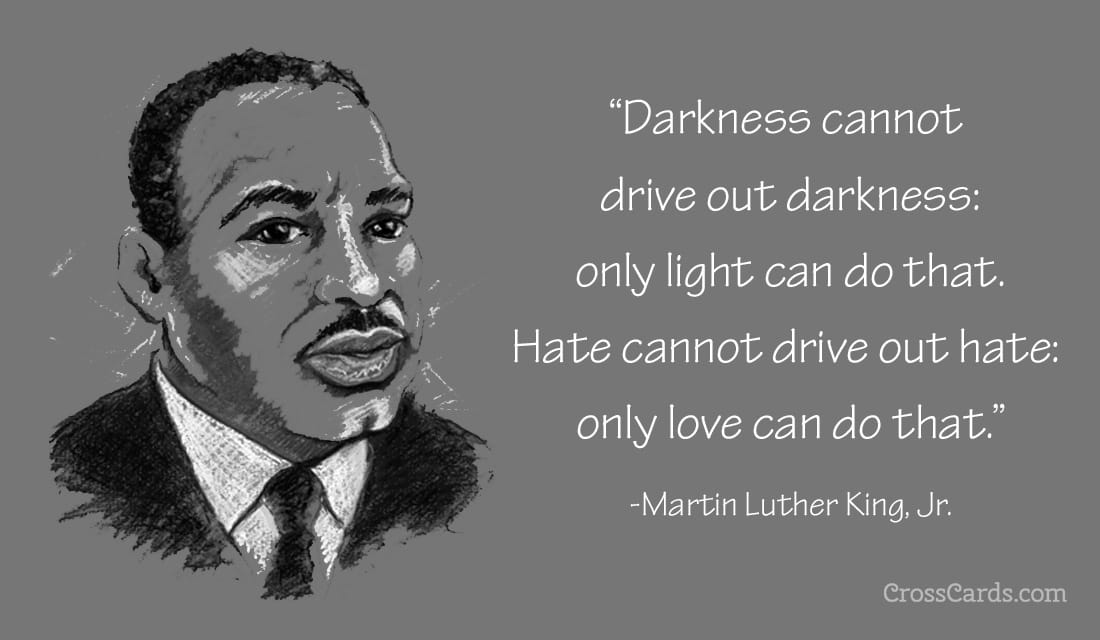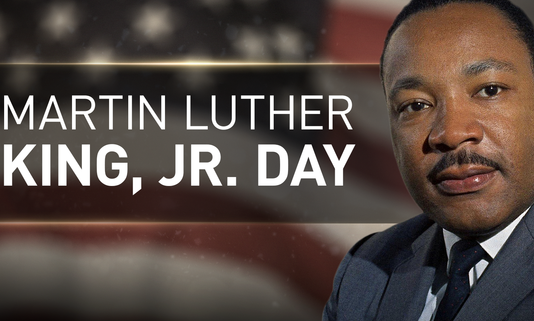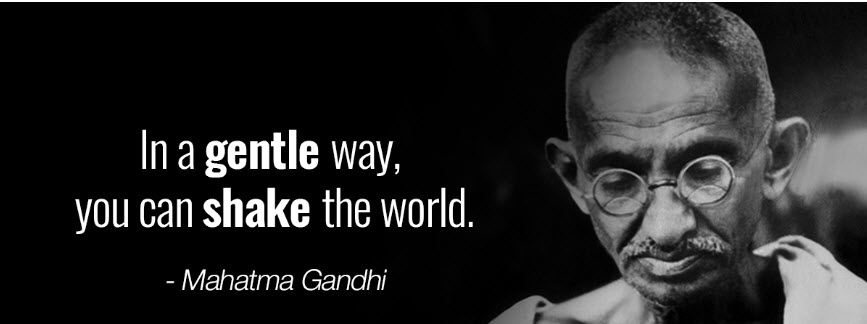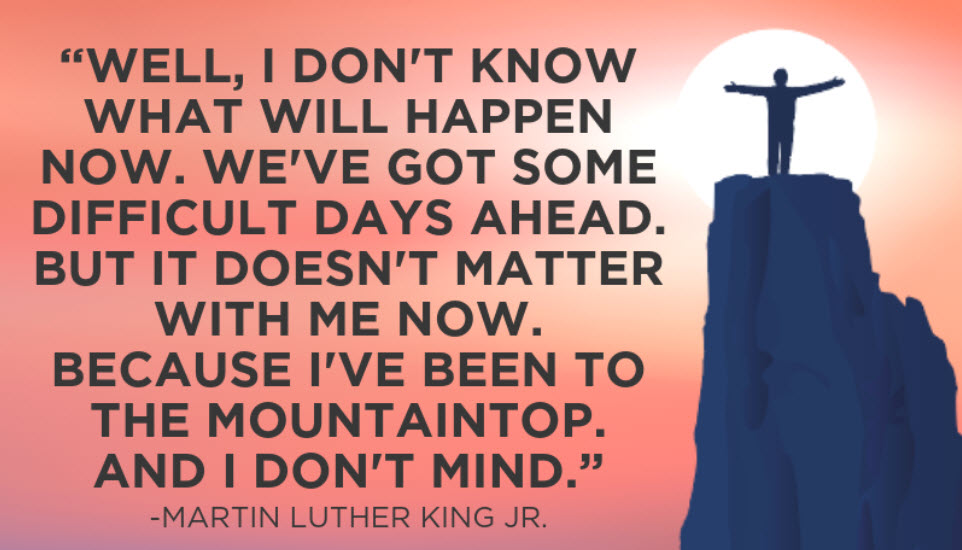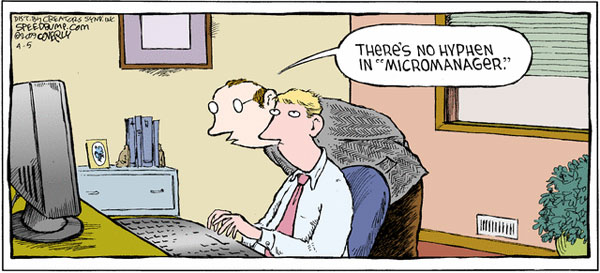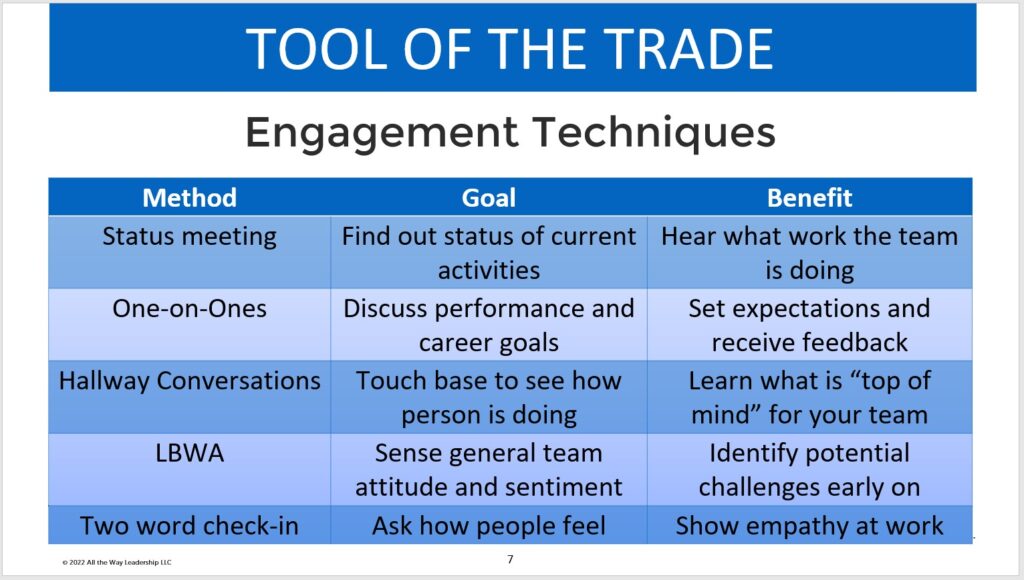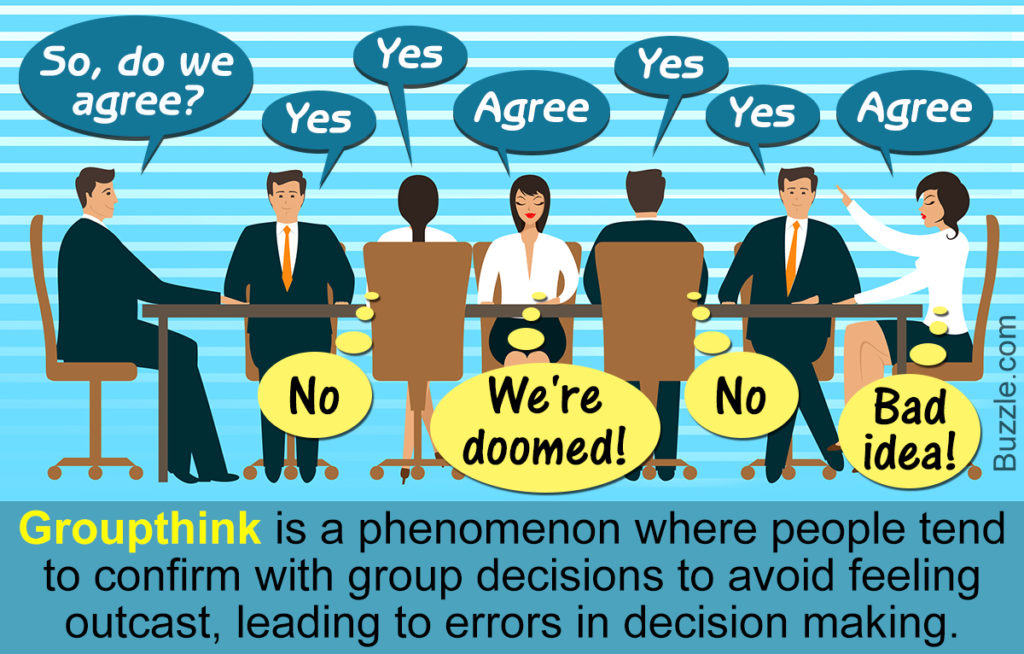Our Battalion Commander decided one morning that he wanted to spend time with his troops. We were many months into a peacekeeping mission and we were all bored. I volunteered to escort our commander for these visits. They were awkward. Almost no one knew our commander. He was horrible at talking with any of the troops. It was clear that this Lieutenant Colonel did not know the practical tactical tips leaders leverage to engage their team members effectively.
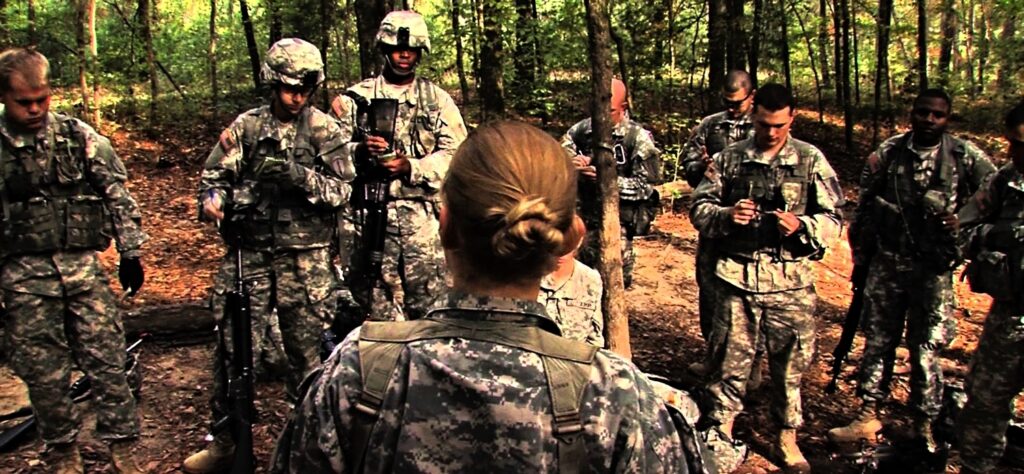
Practical tactical tips for effectively engaging your team members
All The Way Leadership! believes that strong leaders engage their team members in a meaningful manner. They effectively engage their team members using many methods It is important that leaders ask insightful questions to effectively engage their team members. In this post, I share some practical tactical tips (PTTs) for how to effectively engage your team. Simple advice for new leaders to follow.

Practical Tactical Tip (PTT) #1 – Your engagement must be authentic
Authenticity is a hot topic for leaders these days. There are many excellent books and articles describing how to be an authentic leader. I will keep it simple. Being yourself is the most basic definition of authenticity. I will add that it helps if you show up at work as the best version of yourself. The reason you need to be authentic is that no one likes fake engagement. Your team can tell if you are faking it, and will respond accordingly. When you engage your team – be authentic. They deserve it.

PTT#2 – Engage your team on a consistent basis
I have already written about the importance of consistency when it comes to engaging your team members. It is worth repeating here that the best way to build strong relationships with your team members is through consistent engagement. You build trust and increase mutual understanding each time you talk with your team members. Trust is critically important, especially when it comes time for a leader to have a crucial conversation. If a leader lacks rapport with their team members, it can be challenging when he tries to have a discussion about a difficult topic. Trust me – no one wants to experience an awkward interaction with their leader, especially on important issues.

PTT#3 – You may need to share about yourself when you engage your team
People are usually not that comfortable talking with someone they hardly know. It is rare that you will open up to a complete stranger. This is true in life, and also at work. Therefore, it is important that your team know who you are. If you are going to engage your team in a meaningful way I recommend that you share a little about yourself when talking with them. No, you don’t need to go into excruciating details. And for heaven’s sake, do not overshare. Rather I am saying that part of being authentic is showing up as yourself at work. Share insights about who you are, what you like to do, and other tidbits that might be relevant. I have worked with some leaders who refuse to disclose any personnel information to anyone. They remained an absolute mystery to everyone which lead to strange interactions.

A final practical tip – when in doubt thank your team for the work they do
One final practical tip. If you are unsure what to talk about when engaging your team. A good place to start is by thanking them for the work they do for you. No one is going to get mad at you or think you are an ineffective leader if you give gratitude for their efforts. In fact, I believe it will have the opposite effect. Many people at work feel underappreciated for all they do. Be the kind of leader that goes out of her way to say thank you to your team members on a regular basis. It will pay dividends in the long run.
People will forget what you said, people will forget what you did, but people will never forget how you made them feel.
Maya Angelou
ATW! will make you a better leader
I hope you join me on this journey to raise the next generation of leaders. The world is in desperate need of more great leaders. Women and men who lead with confidence, clarity, and creativity. It’s time to become the leader that your world needs. Let’s go All The Way!

